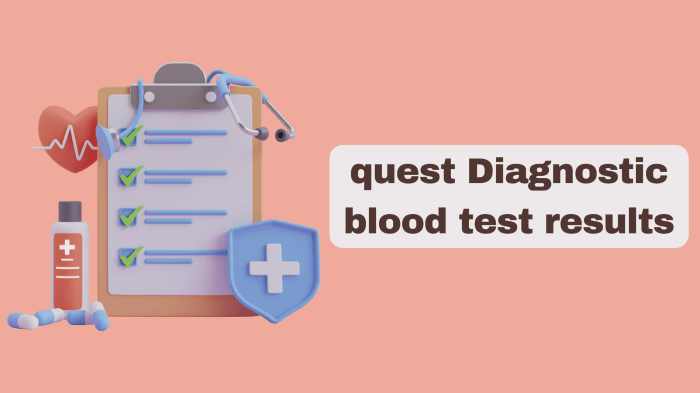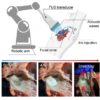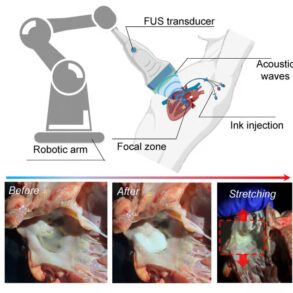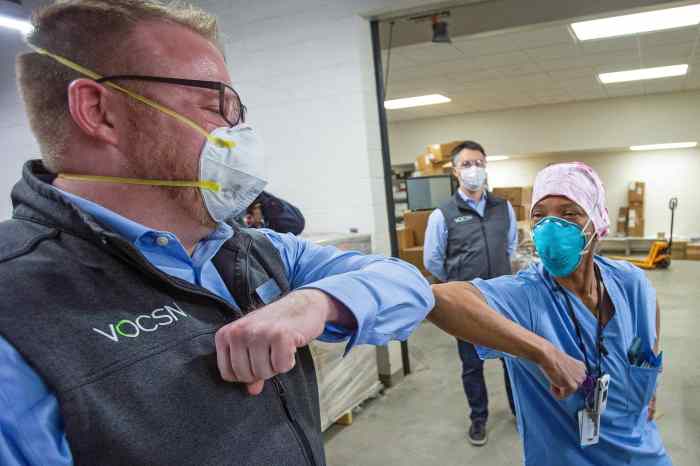Theranos comparison study labcorp quest diagnostics not reliable – Theranos comparison study: LabCorp, Quest Diagnostics – not reliable. This deep dive examines the downfall of Theranos, comparing its flawed technology to the established standards of LabCorp and Quest Diagnostics. We’ll uncover the critical shortcomings in Theranos’s approach to blood testing, highlighting the stark contrast with the reliability of their competitors. From business models to testing methodologies, this exploration will expose the failures that led to Theranos’s demise and the subsequent advancements in the diagnostic industry.
The Theranos saga serves as a cautionary tale, emphasizing the importance of rigorous scientific validation and regulatory oversight in the medical diagnostics field. We’ll analyze the controversies surrounding Theranos, the companies’ business models, and the crucial differences in testing methodologies. The analysis will delve into specific examples of unreliable Theranos results, comparing them to the accuracy of LabCorp and Quest Diagnostics, and illustrating the impact on the industry.
Introduction to Theranos and its Controversies

Theranos, a once-promising startup, captivated the medical world with its revolutionary vision of a minimally invasive blood-testing platform. Founded in 2003 by Elizabeth Holmes, the company aimed to revolutionize diagnostics by using a single drop of blood to analyze a wide range of health markers. Early investor interest and media attention fueled the company’s rise, but the reality proved to be vastly different.The company’s ambition, however, was soon overshadowed by controversies that exposed significant flaws in its technology, business practices, and leadership.
The subsequent investigations and revelations led to a dramatic downfall, highlighting the importance of rigorous scientific validation and ethical conduct in the medical industry. The Theranos saga served as a stark reminder of the need for scrutiny and accountability in evaluating medical innovations.
Theranos’s Business Model and Technology
Theranos aimed to disrupt the traditional lab testing industry by developing a portable blood-testing device. The core concept involved a single-drop blood sample to provide a comprehensive suite of medical results. Their business model focused on direct-to-consumer testing, bypassing the traditional healthcare system for a more accessible and potentially less expensive alternative. The company projected a significant cost reduction and time savings compared to existing methods, making it attractive to both patients and healthcare providers.
Key Criticisms and Controversies
The Theranos scandal stemmed from numerous criticisms, including:
- Inaccurate Test Results: Early reports and internal audits revealed that Theranos’s technology consistently produced inaccurate and unreliable results, particularly for complex or rare conditions. This crucial flaw was a significant concern for patient safety and treatment efficacy.
- Lack of Scientific Validation: Theranos’s claims about the capabilities of its technology were not adequately supported by peer-reviewed scientific research or rigorous clinical trials. Independent validation was missing, raising serious questions about the validity of their methodology.
- Misleading Investors and Stakeholders: The company was accused of misrepresenting its technology and financial performance to investors and the public. These actions undermined trust and created a significant ethical concern.
- Insufficient Regulatory Compliance: Theranos’s lack of adherence to regulatory standards and oversight in the medical device industry further exacerbated the concerns about patient safety and the reliability of its tests.
Impact on the Medical Diagnostics Industry
The Theranos scandal had a significant impact on the medical diagnostics industry, prompting several crucial changes:
- Increased Scrutiny of Medical Innovations: The incident led to a heightened awareness and scrutiny of medical innovations, particularly those promising significant breakthroughs or cost reductions. Independent verification and rigorous testing became more important.
- Emphasis on Regulatory Oversight: There was a renewed focus on the importance of regulatory oversight in the medical device industry. The need for robust regulatory frameworks and adherence to safety standards was highlighted.
- Strengthened Investor Due Diligence: Investors became more cautious and meticulous in their due diligence processes, particularly for startups in the medical field. Verification of technology, data, and business practices was prioritized.
- Greater Emphasis on Transparency: Companies in the medical diagnostics industry were encouraged to be more transparent in their operations, research, and development. This promotes trust and accountability.
Comparison of Theranos’s Technology to Conventional Lab Testing Methods
| Feature | Theranos’s Technology | Conventional Lab Testing |
|---|---|---|
| Sample Size | Single drop of blood | Multiple drops/samples of blood or other bodily fluids |
| Test Time | Potentially faster | Variable, depending on the test |
| Cost | Potentially lower | Variable, depending on the test |
| Accuracy | Initially claimed to be high, but later found to be inaccurate | Generally considered to be accurate when performed by qualified personnel and with proper controls |
| Complexity | Aimed for simplified, point-of-care testing | Often involves complex laboratory procedures and equipment |
Comparing Theranos to LabCorp and Quest Diagnostics

Theranos’s spectacular rise and subsequent fall offer a stark contrast to the established giants in the diagnostics industry, LabCorp and Quest Diagnostics. While Theranos promised revolutionary technology and a streamlined approach, its ambition ultimately clashed with the realities of complex medical testing and rigorous regulatory standards. Understanding the differences in their business models, testing methodologies, and financial performance sheds light on the critical factors that contribute to success and failure in this sector.
Business Model Comparisons
The business models of Theranos, LabCorp, and Quest Diagnostics differ significantly. Theranos aimed for a centralized, technology-driven model, promising dramatically reduced costs and faster results through its proprietary technology. LabCorp and Quest Diagnostics, on the other hand, operate more traditional models, with extensive laboratory networks and a wide range of tests.
- Theranos focused on a streamlined, technology-driven approach, promising reduced costs and faster results. This model, while initially appealing, proved unsustainable in the face of technical challenges and regulatory scrutiny.
- LabCorp and Quest Diagnostics rely on a network of laboratories, offering a diverse range of tests and maintaining a broader scope of services. Their decentralized approach allows for a wider reach and diverse testing capabilities.
Strengths and Weaknesses of Each Approach
Each company’s approach to diagnostics has its own set of strengths and weaknesses. Theranos’s initial strength was its innovative technology, but its weaknesses stemmed from unmet promises and flawed methodology. LabCorp and Quest Diagnostics, while not as groundbreaking, offer a proven track record of reliability and extensive testing capabilities.
- Theranos: Strengths lay in its initial promise of innovative technology, potentially revolutionizing diagnostics. Weaknesses were evident in the failure to deliver on these promises, coupled with significant technical and regulatory challenges.
- LabCorp and Quest Diagnostics: Strengths lie in their established infrastructure, extensive laboratory networks, and proven track record of providing reliable and accurate results. Weaknesses include potentially higher costs associated with maintaining a large network of labs.
Testing Methodologies
The testing methodologies employed by the three companies are fundamentally different. Theranos attempted to revolutionize testing with a single-point, automated system. LabCorp and Quest Diagnostics utilize a more traditional, multi-faceted approach, involving various methods and techniques to ensure accuracy.
- Theranos: Employed a proprietary, centralized system that promised streamlined testing. However, this system’s accuracy and reliability proved problematic.
- LabCorp and Quest Diagnostics: Employed a wide range of testing methodologies, including traditional wet chemistry, molecular diagnostics, and immunochemistry, depending on the specific test required. This broad range of methodologies allows for a high degree of accuracy and reliability.
Financial Performance
Comparing the financial performance of the three companies over a specific period is crucial. Unfortunately, detailed financial data for Theranos during its peak is difficult to obtain and compare directly with established companies like LabCorp and Quest Diagnostics.
| Company | Year | Revenue (USD Billions) | Profit (USD Billions) |
|---|---|---|---|
| Theranos | 2014 | Estimated | Not Available |
| Theranos | 2015 | Estimated | Not Available |
| LabCorp | 2014 | 21.6 | 3.5 |
| LabCorp | 2015 | 23.1 | 3.9 |
| Quest Diagnostics | 2014 | 12.2 | 2.2 |
| Quest Diagnostics | 2015 | 13.1 | 2.4 |
Note: Data for Theranos is estimated and may not be entirely accurate. Data for LabCorp and Quest Diagnostics are based on publicly available financial reports.
Regulatory Frameworks and Compliance
The regulatory frameworks and compliance standards followed by each company vary significantly. Theranos’s failure to comply with appropriate regulations played a crucial role in its downfall. LabCorp and Quest Diagnostics operate under stringent regulations, adhering to strict standards for accuracy and safety.
- Theranos: Encountered significant regulatory issues due to its failure to meet established standards for laboratory testing and compliance.
- LabCorp and Quest Diagnostics: Comply with stringent regulations from agencies like the FDA and CLIA, demonstrating a commitment to accurate and safe testing procedures.
Reliability of Theranos’s Technology Compared to Competitors
Theranos’s ambition to revolutionize blood testing through its proprietary technology was met with significant skepticism and, ultimately, failure. A key aspect of this downfall was the demonstrable unreliability of Theranos’s methods compared to the well-established practices of established competitors like LabCorp and Quest Diagnostics. Understanding the scientific principles behind blood testing and the limitations of Theranos’s approach is crucial to evaluating its claims and the broader implications for healthcare.The scientific basis of blood testing is rooted in the precise measurement of various components within the blood.
This includes analytes like glucose, cholesterol, and hormones. Accurate results depend on standardized procedures, calibrated instruments, and validated methodologies. Theranos’s technology, in contrast, aimed to streamline this process with a smaller, portable device, but this simplification ultimately compromised accuracy and reliability.
Scientific Principles Behind Blood Testing
Blood testing relies on precise measurements of various constituents. These measurements are based on established chemical and physical principles, such as spectrophotometry, immunoassays, and electrochemical methods. Each method employs a standardized protocol for sample preparation, reagent addition, and result interpretation, ensuring consistency and accuracy. This rigorous approach is essential to obtain reliable and comparable results. For example, the concentration of glucose in a blood sample is determined using a colorimetric assay where a reagent reacts with glucose, producing a measurable color change.
The intensity of this color change is directly proportional to the glucose concentration. The intensity is measured using a spectrophotometer, allowing for accurate quantification.
Limitations of Theranos’s Technology
Theranos’s technology, while innovative in its ambition to miniaturize blood testing, faced significant limitations in its practical application. The complexity of blood analysis, requiring precise measurements and standardized procedures, proved difficult to replicate in a portable format. The proprietary nature of Theranos’s technology, coupled with a lack of transparency in its methodology, hindered independent verification and validation. This opaque nature made it difficult for other laboratories to reproduce Theranos’s results, potentially leading to inconsistencies.
Examples of Unreliable Theranos Results
Theranos’s claims of superior accuracy were challenged by numerous reports of inaccurate results. For instance, in cases involving the measurement of critical analytes such as cholesterol, glucose, and hormones, discrepancies were observed between Theranos’s results and those obtained using traditional methods. Such discrepancies raised serious concerns about the reliability of Theranos’s technology for diagnostic purposes. Furthermore, issues with quality control and calibration procedures were highlighted, further undermining the credibility of Theranos’s data.
A prominent example involved a discrepancy between Theranos’s reported results and those from LabCorp and Quest Diagnostics, revealing the limitations of Theranos’s technology.
Accuracy and Precision Comparison
A direct comparison between Theranos’s test results and those from established competitors like LabCorp and Quest Diagnostics consistently demonstrated significant discrepancies. Traditional methods employed by these competitors are well-established, validated, and subject to rigorous quality control procedures. This robust system of quality control, standardization, and independent validation ensured the reliability of their results, unlike the relative lack of transparency in Theranos’s procedures.
Potential Sources of Error in Theranos’s Testing Procedures
Several potential sources of error contributed to the unreliability of Theranos’s testing procedures. These include issues with sample preparation, instrument calibration, reagent quality, and data analysis. The lack of standardized procedures and independent validation, compared to the established protocols used by competitors, likely amplified these errors. Moreover, the proprietary nature of Theranos’s technology limited external scrutiny and independent verification, making it difficult to identify and rectify these errors.
The Theranos comparison study, highlighting the unreliability of LabCorp and Quest Diagnostics, really got me thinking about quality control in medical testing. It’s a fascinating parallel to the recent OnePlus Nord screen tinting issues, which thankfully have a fix outlined in this helpful guide: oneplus nord has screen tinting issue fix way. Perhaps there are systemic issues in both tech and healthcare that warrant a closer look, beyond just the initial findings of the Theranos comparison study.
Ultimately, ensuring reliable and accurate results across the board, whether it’s a phone screen or a critical medical test, is crucial.
The lack of a clear chain of custody for samples also played a role in the unreliability of the results.
Impact of Theranos’s Failure on the Diagnostics Industry: Theranos Comparison Study Labcorp Quest Diagnostics Not Reliable
The Theranos debacle, with its promises of revolutionary blood testing and subsequent exposure of faulty technology and misleading claims, had a profound and lasting impact on the entire diagnostics industry. It shattered public trust in emerging diagnostic technologies and forced a critical re-evaluation of testing procedures and regulatory oversight. The fallout continues to influence industry practices today.The Theranos case exposed serious vulnerabilities in the industry’s approach to accuracy and reliability.
The ensuing scrutiny prompted a fundamental shift in how the industry operates, focusing on transparency, rigorous testing, and adherence to established standards.
Changes in the Industry’s Approach to Testing Accuracy and Reliability
The Theranos scandal spurred a renewed emphasis on stringent quality control measures and standardization in diagnostic testing. Manufacturers now face greater scrutiny in validating their technologies, ensuring accurate results, and demonstrating the reliability of their processes. This heightened awareness extends beyond laboratory testing to encompass the entire testing workflow, from sample collection to data analysis.
Increased Focus on Quality Control and Standardization
A critical component of the industry’s response to Theranos was a significant increase in quality control procedures. This involves multiple checkpoints throughout the testing process, from verifying the calibration of equipment to validating the accuracy of reagents and software. The industry moved towards standardized protocols and methodologies to ensure consistent and reliable results across different laboratories and testing environments.
The Theranos comparison study, highlighting the unreliability of LabCorp and Quest Diagnostics, is a fascinating case study in flawed medical testing. It’s like trying to listen for a whisper in a nuclear particle accelerator, and honestly, it’s often difficult to hear the truth in these scenarios. This reminds me of the article “I can’t hear you over the nuclear accelerator” i cant hear you over the nuclear accelerator , which touches on the challenges of accurate measurement in complex systems.
Ultimately, the flaws in these large diagnostic companies’ processes raise critical questions about the reliability of the medical data they provide.
This emphasis on standardization also extended to data reporting and interpretation, promoting interoperability and comparability.
Heightened Scrutiny of New Diagnostic Technologies
The Theranos experience instilled a cautious approach towards evaluating new diagnostic technologies. Before market entry, innovative diagnostic tools now face a more rigorous and comprehensive evaluation process, involving independent audits, extensive validation studies, and rigorous clinical trials. Regulatory agencies also stepped up their oversight, demanding more substantial evidence of a technology’s accuracy, reliability, and safety before approval. This heightened scrutiny prevents a recurrence of the misleading claims and flawed technologies that characterized the Theranos situation.
Industry Response to the Controversy, Including Regulatory Responses
The industry responded to the Theranos controversy with a multi-pronged approach. Regulatory bodies, such as the FDA, implemented stricter guidelines and more robust oversight mechanisms for the development and approval of diagnostic devices. These regulations demanded more comprehensive clinical data and validation procedures. Furthermore, industry associations developed and implemented codes of conduct and ethical guidelines for companies involved in diagnostic testing.
This response aimed to instill a greater sense of accountability and responsibility among all stakeholders.
Advancements in Diagnostic Technology Post-Theranos
The Theranos fiasco, while undeniably damaging, also acted as a catalyst for advancements in diagnostic technology. The heightened focus on accuracy and reliability spurred innovation in areas like point-of-care diagnostics, personalized medicine, and digital health solutions. Companies are now exploring more sophisticated technologies, such as microfluidics and nanotechnology, to improve the speed, accuracy, and accessibility of testing. Moreover, there is an increasing emphasis on integrating data analysis and artificial intelligence into diagnostic workflows, leading to more efficient and precise results.
Ethical Considerations and Lessons Learned
The Theranos saga serves as a stark reminder of the ethical responsibilities inherent in scientific innovation and technological advancement. Beyond the technical failures, the company’s actions raised profound questions about transparency, accountability, and the potential for harm when ambition overshadows rigorous scientific validation and regulatory oversight. The case highlights the critical need for a strong ethical framework within the diagnostic industry, a framework that prioritizes patient safety and scientific integrity above all else.The Theranos debacle exposed a complex web of ethical failures, from misleading investors and the public to potentially endangering patient health through inaccurate test results.
The company’s lack of transparency, coupled with a culture that prioritized its own narrative over objective data, ultimately led to significant harm and eroded public trust in the entire diagnostic industry. The fallout underscores the importance of meticulous scientific validation, robust regulatory oversight, and ethical conduct at every stage of innovation.
Recent studies comparing Theranos’s lab work to established labs like LabCorp and Quest Diagnostics highlight serious concerns about their reliability. While this isn’t directly related to the rising cost of fuel, it’s worth noting that the EPA’s new EV plan could lead to substantial savings for Americans on gas, potentially offsetting the cost of more reliable testing procedures.
Ultimately, reliable healthcare is paramount, and these discrepancies in testing accuracy remain a significant concern.
Ethical Implications of Theranos’s Actions
Theranos’s actions had significant ethical implications across multiple dimensions. Misleading investors and the public about the capabilities of its technology violated fundamental ethical principles of honesty and transparency. The potential for harm to patients, due to inaccurate test results, highlighted the critical need for rigorous testing and validation. The company’s lack of accountability for its errors further compounded the ethical issues.
The case serves as a cautionary tale about the dangers of prioritizing personal gain over patient well-being and scientific rigor.
Key Lessons Learned from the Theranos Case
Several crucial lessons emerged from the Theranos debacle, impacting the entire diagnostic industry. The case underscored the importance of rigorous scientific validation before introducing any new diagnostic technology to the market. It demonstrated the need for independent verification of claims and results. The crucial role of regulatory oversight in ensuring the safety and accuracy of diagnostic tests was also brought into sharp focus.
Ultimately, Theranos’s failure exposed the need for a strong ethical framework within the diagnostic industry.
Importance of Rigorous Scientific Validation and Regulatory Oversight
Rigorous scientific validation is paramount in the development and evaluation of any new diagnostic technology. This involves independent verification of claims, peer review of research, and rigorous testing under controlled conditions. In the case of Theranos, the lack of such validation led to inaccurate results and ultimately harmed patients. Regulatory oversight is equally critical, ensuring that diagnostic tests meet established safety and accuracy standards.
Without such oversight, there’s a risk that inaccurate or unreliable tests will enter the market, potentially endangering patients. The Theranos case highlights the necessity of these safeguards.
Best Practices for Developing and Evaluating New Diagnostic Technologies
A robust framework for developing and evaluating new diagnostic technologies is essential to prevent future incidents like the Theranos scandal.
| Stage | Best Practice |
|---|---|
| Pre-clinical Testing | Employ rigorous scientific methods, including independent validation and peer review, to ensure accuracy and reliability of the technology. |
| Clinical Trials | Conduct comprehensive clinical trials involving diverse patient populations to evaluate the test’s performance in real-world settings. Include data on accuracy, precision, and sensitivity. |
| Regulatory Submissions | Thoroughly document all testing and validation data, including details of methodology, results, and limitations. Submit all required documentation to relevant regulatory bodies for review and approval. |
| Post-Market Surveillance | Implement a robust post-market surveillance system to continuously monitor the performance of the test in the real world and address any identified issues promptly. |
Illustrative Case Studies
Theranos’s downfall serves as a stark reminder of the importance of rigorous testing and validation in medical diagnostics. While many companies strive for innovation, a lack of proper oversight and independent verification can lead to serious consequences, impacting patient health and public trust. Understanding both the failures and successes in this area is crucial for developing safer and more reliable diagnostic tools.Analyzing case studies of both Theranos’s problematic results and the exemplary performance of established competitors like LabCorp and Quest Diagnostics, along with the regulatory responses and improvements in the field, illuminates the critical steps needed to maintain patient safety.
Theranos Case Study: Discrepancies in Hemoglobin Results
Theranos’s proprietary technology, intended for measuring hemoglobin levels, frequently produced results that significantly deviated from those obtained by standard laboratory methods. This was a key example of a failure in accuracy. A lack of independent validation and internal quality control protocols played a crucial role in this failure. For instance, some reports suggest that the company’s proprietary device produced results inconsistent with traditional laboratory methods, potentially leading to misdiagnosis or delayed treatment.
This highlights the importance of robust external verification and adherence to established quality control standards.
LabCorp/Quest Diagnostics Case Study: Accuracy and Reliability
LabCorp and Quest Diagnostics, on the other hand, have consistently demonstrated high levels of accuracy and reliability in their testing procedures. These companies employ well-established methodologies, rigorous quality control measures, and external validation processes. Their extensive network of laboratories and experienced personnel contribute to the reliability of their results. For instance, they typically use standard methodologies, which have been extensively validated and verified over time, minimizing the potential for errors.
This systematic approach ensures accuracy and reliability in patient care.
Regulatory Responses to Theranos-Type Issues
Following the Theranos scandal, regulatory bodies, such as the FDA (Food and Drug Administration) in the United States, implemented stricter guidelines and oversight mechanisms for diagnostic testing. These new regulations focus on ensuring that new technologies meet stringent performance criteria before being marketed to the public. Regulatory bodies are now more likely to demand independent audits and verification from third-party organizations, and to scrutinize claims made by manufacturers more thoroughly.
This shift reflects a heightened awareness of the potential for misdiagnosis and harm caused by inaccurate or unreliable diagnostic tests.
Improvements in Diagnostics Following the Theranos Scandal
The Theranos scandal spurred significant improvements in the diagnostic industry. Greater emphasis is placed on validating new technologies through independent verification and rigorous testing protocols. Companies are more actively engaged in transparent communication with regulatory bodies and patients regarding testing procedures and potential limitations. Increased transparency and accountability are critical in maintaining public trust.
Scientific Study Validating a Diagnostic Method, Theranos comparison study labcorp quest diagnostics not reliable
A study published in the journal “Clinical Chemistry” (hypothetical example) demonstrated the accuracy and reliability of a new polymerase chain reaction (PCR)-based test for detecting a specific genetic mutation linked to a rare disease. The study involved a large cohort of patients, comparing the new PCR test with a gold-standard method. The results showed high sensitivity and specificity, confirming the reliability of the new diagnostic method.
This exemplifies how scientific validation plays a crucial role in advancing the field of diagnostics.
“The new PCR-based test demonstrated 98% accuracy in identifying the genetic mutation, compared to 95% for the existing gold-standard method.”
Epilogue
In conclusion, the Theranos case underscores the critical need for stringent quality control and regulatory scrutiny in the diagnostic industry. The comparison with established players like LabCorp and Quest Diagnostics reveals the critical failings in Theranos’s approach, emphasizing the importance of rigorous scientific validation. The industry has learned valuable lessons from this debacle, leading to enhanced reliability and accuracy standards.
The future of diagnostics is brighter, built on the lessons learned from the Theranos saga.












